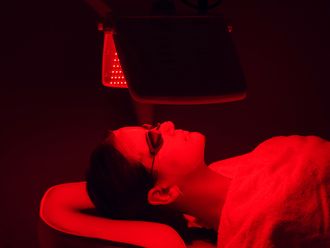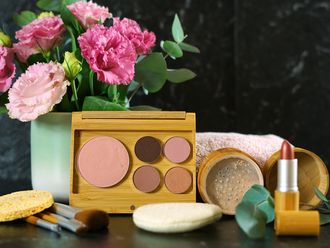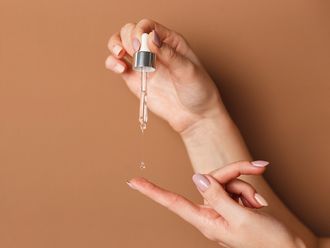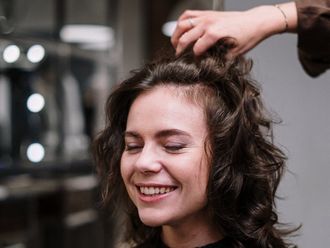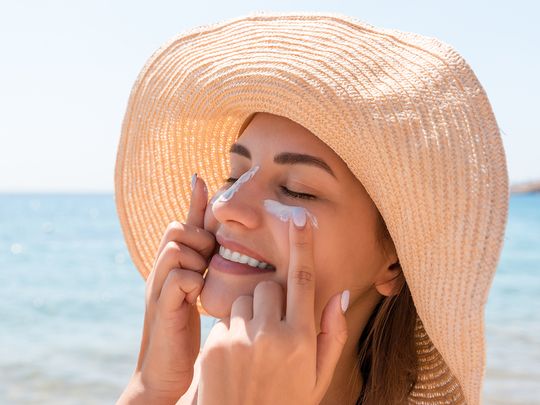
Sun's out, fun's here! However, wait before you hit the beach and soak up the rays, you need to equip yourself for battle. The battleground: Your skin. The enemy? The ultraviolet rays from the sun that can lead to sunburn, wrinkles that make you look like a lobster, and other skin issues. Well, your secret weapon is sunscreen.
However, with so many choices out there, it does get confusing what to pick. There are two components to most sun block creams. One is a physical block with inorganic compounds, commonly referred to as physical or mineral sunscreens. The other kind of sunblock contains organic chemical compounds, referred to as chemical sunscreens.
So, team mineral or team chemical? Some of you must be wondering, does it really matter which one you choose?
Well, it might. The answer, as our dermatologists will explain, depends on how the sunscreen fights off those sun rays.
Let’s dive in.
The mineral or physical sunscreens
Physical and chemical sunscreens shield your skin from the sun’s rays in very different ways.
As Dalya Sager, a Medical Aesthetician at Dubai-based BROWZ, “Physical or mineral sunscreens, feature ingredients such as titanium dioxide or zinc oxide. These act as reflectors that act as physical blockers. The minerals form a protective barrier on the skin and reflect UV rays, before they can make contact with the surface of the skin,” she says. The benefits of physical sunscreens is that they can also help block UVA rays that come through windows, that can cause pigmentation and the breakdown of collagen. In short, it’s crucial to wear sunscreen even if you’re not going outside.
Physical sunscreens are ideal for children, people with sensitive skin and people with melasma, a skin disorder where the skin has flat patches and freckle-like spots, too.
Moreover, physical sunscreens offer immediate protection. It can also be applied on top of other make-up and skincare products, she adds. Normally, these don’t have many side-effects. However, Siyah Aashim, a Dubai-based dermatologist, warns that as the mineral sunscreen is thick and sits on the skin, it can aggravate those with skincare troubles, like acne breakouts. They’re also not water resistant, as you need to be more consistent with reapplication.
Chemical sunscreens

Unlike mineral sunscreens, which offer immediate protection, chemical sunscreens, must be applied 30 minutes before going outdoors to let the ingredients fully bind to the skin, explain the dermatologists. This kind of sunblock does not sit on the skin or block rays: They feature ingredients that absorb UV rays before your skin can absorb them.
Elaborating further, Aashim explains the chemicals in the sunscreen, which include oxybenzone, avobenzone, octisalate, octocrylene, homosalate, and octinoxate. These create a chemical reaction in which UV light is converted to heat, and the heat dissipates from the skin. In most cases, this sunblock does not leave the tell-tale white film layer on the skin, which makes it easier for a broad range of skin tones to wear. As they’re meant for absorption, the sunblock does not feel sticky or greasy. It blocks the UVA rays that can destroy the upper layer of your skin, such as collagen, and trigger premature ageing. Moreover, it has long-term benefits. This sunscreen works to protect the deeper damage caused by sun burns, oxidation and skin lesions that can lead to cancers, she explains.
“The best chemical sunscreens include avobenzone in their formulations,” explains Sager. “They would also have octinoxate, which is the most commonly used ingredient in chemical sunscreens to absorb UVB radiation,” she says. However, it’s best advised to check with your dermatologist first, before attempting to use one.
Are chemical sunscreens safe?
There has been much debate surrounding the ingredients in the chemical sunscreens. As they absorb the sun’s rays, they can also pose health concerns.
In 2019, the US-based Food and Drug Administration (FDA), proposed rules and regulations intended to update sunscreen requirements, according to the US-based medical site, Healthline. The agency hasn’t yet found evidence that the majority of sunscreen chemicals can cause harmful side effects. Nevertheless, studies are still ongoing.

People with inflammatory skin conditions such as rosacea need to be careful with chemical sunscreens as depending on their ingredients, the products could make these conditions worse...
According to a 2020 study titled Effect of Sunscreen Application on Plasma Concentration of Sunscreen Active Ingredients, 6 out of 12 active ingredients that are being researched, enter the bloodstream just after one application. They remain detectable in the blood and on the skin, up to three weeks later. “The four chemicals studied were avobenzone, oxybenzone, ecamsule and octocrylene,” explains Sager. “They are part of a dozen ingredients that the FDA said need to be researched by manufacturers before they can be regarded as safe and effective,” she says.
Sager adds that the FDA also recently completed a preliminary study on the effects of chemical sunscreens on the body, yet until further research is completed, physical or mineral sunscreens are preferably the safer option, for those with sensitive skin. Moreover, those with inflammatory skin conditions such as rosacea need to be careful with chemical sunscreens as depending on their ingredients, the products could make these conditions worse, she adds.
What is the Sun Protection Factor (SPF)?
Physical or chemical, sunscreen is a must: There’s no skipping it. Be sure to always check the SPF (Sun Protection Factor) when purchasing your cream.
The SPF factor in these creams can range anywhere from 15-100, explains Aashim. This gives you an idea of the extent to which the cream can protect from the sun’s exposure. Be warned, no sunscreen is 100 per cent effective in preventing damage from sun exposure.
The SPF is a calculation of the duration and intensity of sun protection that a cream can provide in a single application. For instance: For instance, SPF 15 will provide 93 per cent protection and SPF 30 about 97 per cent protection, while SPF 50 and 100 can give up to 98 or 99 per cent protection. So, as the dermatologists explain, the formula for the power of the SPF is multiplied by 10. SPF 15 gives protection for up to 150 minutes (10x15) in a single application, while an SPF 30 cream will provide protection for 300 minutes (10x30) in a single application. So an SPF 30 sunscreen will give you 97 per cent protection for almost 5 hours.
As Sager explains, the UV index (UVI) helps people to know how to protect themselves against UV rays. “The range is from 0 to 11. The higher the UV Index, the stronger the sun's rays, and the greater the need to protect your skin,” she says. “In order to protect against aging, skin damage and the more harmful forms of skin cancer, you must use broad spectrum sun protection,” she adds.
Both the experts emphasise the need to apply sunscreen frequently, every two to three hours, especially if you are working or playing outdoors.
What to look for in a sunscreen?
• Check ingredients to determine if it is a physical sunblock, a chemical sunscreen or a combination of both.
• Check SPF strength. For maximum protection, it is advisable to use a cream with an SPF between 50-100 in this region.
• Read the method of application carefully to understand the frequency of application if outdoors and the time lapse necessary after application of the cream, before stepping out into the sun, for it to be effective.



